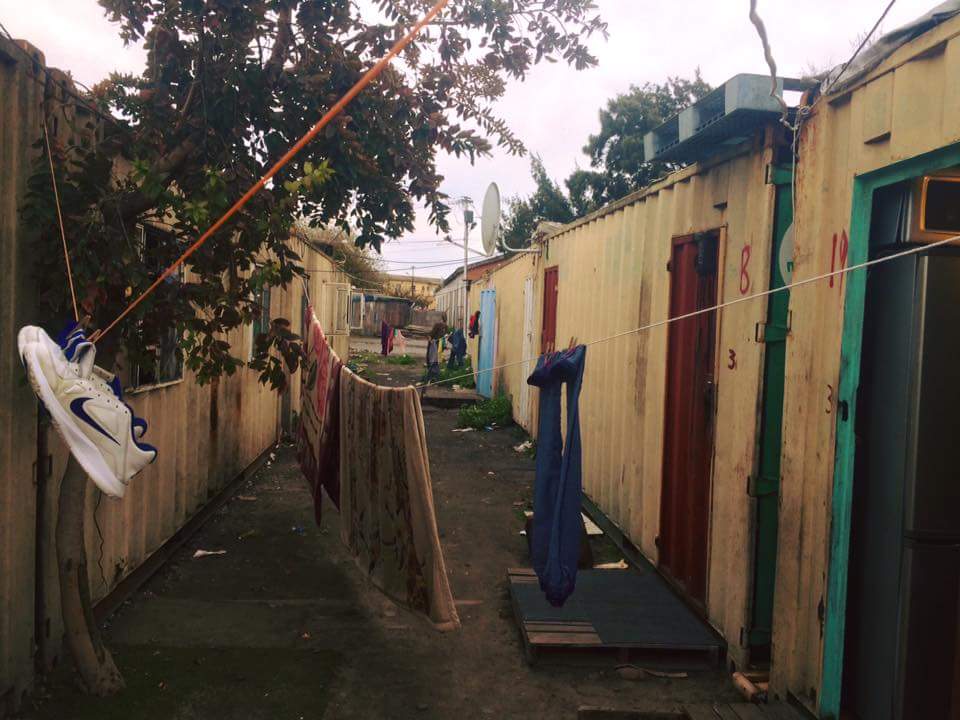TOWNSHIP TOURISM
I would describe the day I spent touring one memorial site from township to township as Township Tourism. Although I appreciated hearing from Lizo and others from the Direct Action Center, I felt it lacked true interaction with the community. On the other hand I was deeply moved by some of the stories told and memorials visited. Our visit to a community formed and built by a group of mostly single mothers was especially inspiring. I do wish that I could have spent more time in each place and learned more about each event in a more personal setting. But I can imagine that in four weeks I can’t expect to get much more than just a taste of some of the changes happening here.
Our tour started with a visit and meditation in District 6. Since I’ve been in Cape Town I’ve been hearing stories about District 6. The forced eviction of an entire community and network of culture that was entirely eradicated from history. When we were standing in the road amongst all the empty fields our group leader asked us to close our eyes and think about what a community means to us. As I stood thinking about my home, my group of friends, the place that I work, and all the people I say hello to on the street, I got a clear image of how much my community means to me. Then we were asked to image having all of that taken away from us. I finally got a clear feeling of what it must have been like to the people of District 6 and yet I still can’t even imagine the pain they must have gone through.
After District 6 we moved on to visiting the different townships, places that a lot of people from District 6 might have been forced to relocate to. We visited quite a few townships including, Langa, Khayelitsha, Gugulethu, and a few others. Every time we stopped in a township, we would load out of the bus, talk and then load back into the bus. Which is why I felt a little uncomfortable at times. I disliked feeling like a tourist in an area that people are living and going about their daily routines. I know I would personally dislike feeling like I was being looked at like the inside of a fishbowl. The nice thing about the stops we made, was that every time we stopped it was in front of a significant piece of history, specifically places memorizing those who were willing to fight for their human rights during Apartheid.
The most memorable stop for me was the memorial for Amy Biehl. The monument itself was almost inconsequential. It was only a small plaque and cross sitting in front of a busy gas station. As the story of Amy was told however, I was completely moved. Amy was a young American graduate from Stanford living in South Africa during the early 90’s, a tense political time. Our guide described how she was driving out of the township after dropping some friends off when a group of protestors saw her. When the protestors saw Amy, a white woman, they immediately associated her with their past oppression. They subsequently dragged her out of the car and proceeded to stab and stone her to death. Right before she died Amy managed to drag herself to the spot I was standing. During this moment in the story I was almost brought to tears. It was astonishing and saddening to hear of a young girl being stoned to death because of an idea of what a white person represented. The same and worse can be said of the atrocities that happened to the entire black, colored, Indian and other groups of South Africa because of a preconceived notion of inferiority.
Our last stop during the day was in Victoria Mxenge, a community named after the wife of a human rights activist and friend of Nelson Mandela. The community was started by a group of mostly single mothers from the informal settlements and backyard shacks. What is inspiring about this community of women is how they banded together to not only form a community but that they learned to build it for themselves. They worked to find a plot of land for themselves, raise the money to build their own houses, and provide their children with developmental programs. It was an incredible opportunity to be able to walk on the streets with these woman and see the houses they were living in. One of the woman during our visit told the story of a leader in the community waiting for over 6 years to build her house. She was picking up small loose bricks whenever she saw them so that she could complete her home. These women’s determination and tenacity is remarkable. It is rare to hear stories about the community and people initiating their own change. It’s far more common to hear about NGO’s or the government being the catalyst for change. I think this is why the community of Victoria Mxenge sticks out to me the most out of all the housing projects I’ve seen so far in Cape Town.





